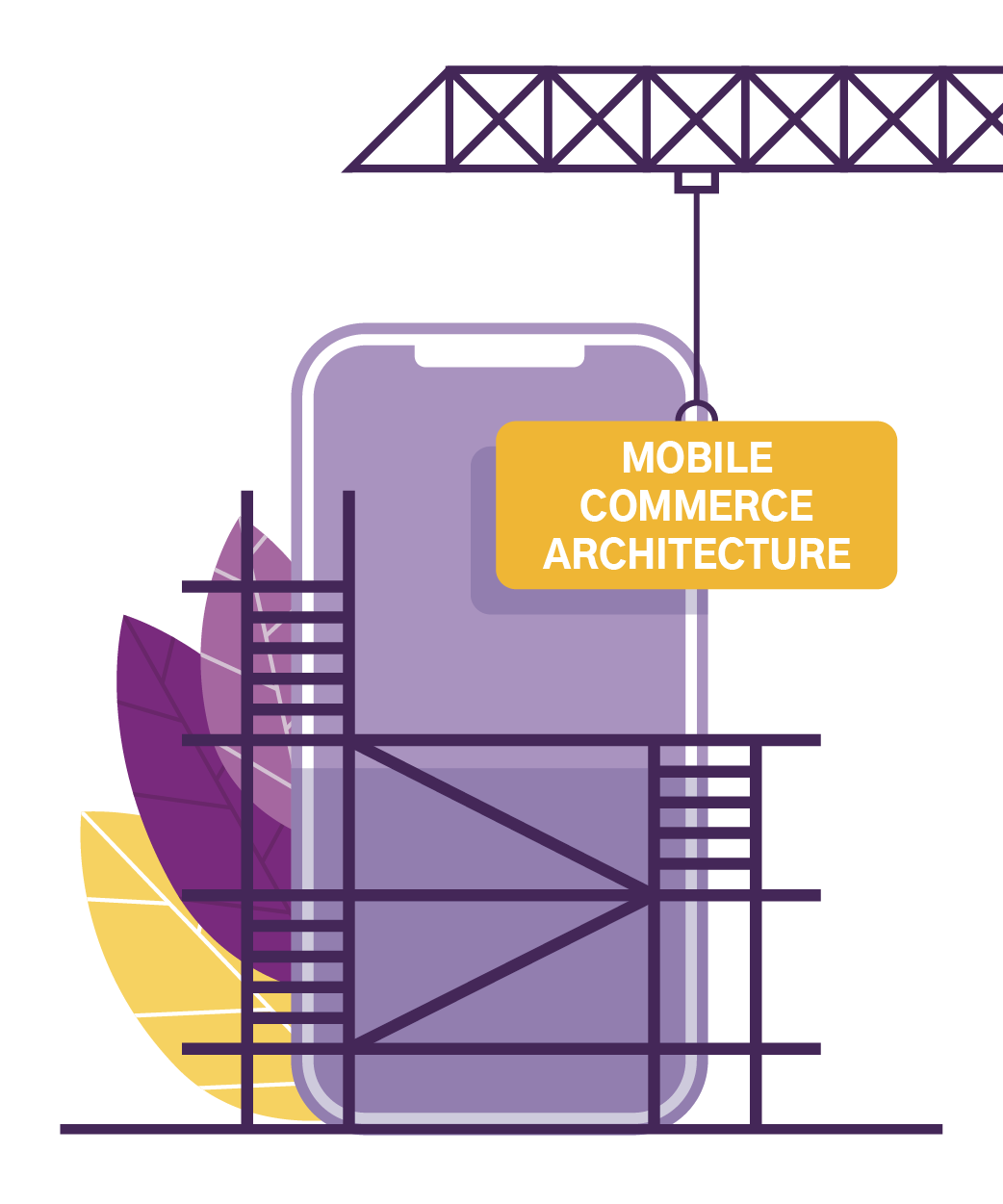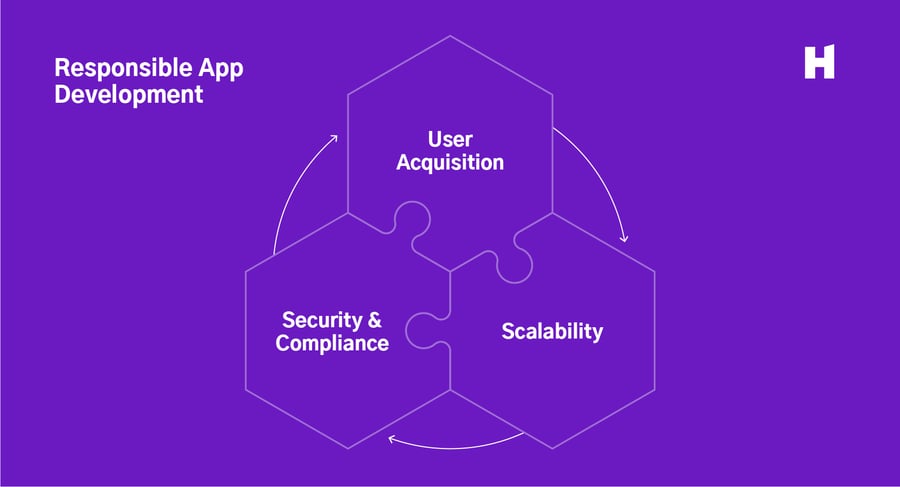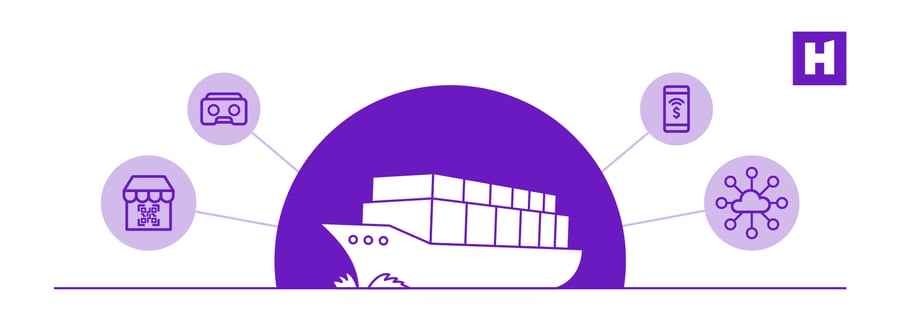NEW LAUNCH: Weill Cornell Medicine's Maya app is now available for Android!
NEW LAUNCH: Weill Cornell Medicine's Maya app is now available for Android!

One day it hits you:
“Wow, that thing I just did was actually easier to do on my phone than on my laptop…”
This has been true for years in some applications, proven by the fact that 81% of people access Facebook solely via mobile device (Statista).
More recently, however, mobile commerce transactions are up. Part of this is consumer demand, but its continued growth is also a product of solid mobile commerce architecture. If people tried to complete an ecommerce transaction on their phone and it failed, felt clunky, or didn’t inspire confidence, they simply wouldn’t continue the behavior.
But consumers are continuing to shop from their phones. In fact, the mobile commerce share of total ecommerce retail sales in the United States is expected to hit 54% by the end of 2021 and total m-commerce transactions are expected to grow 68% by 2022.
Mobile applications have paved the way for this growth. Sure, mobile commerce may have originally started with SMS-based transactions, but as mobile devices became more powerful, m-commerce became less of a gimmick and more of, well, just the way things are!
And because of the potential for growth in this channel, virtually every retailer will be chasing more transactions and revenue derived from m-commerce. And with billions of dollars at stake, a solid mobile commerce architecture will help make sure you get your slice of the pie.
In this post we’re going to dive deeper into the need to create a mobile commerce architecture and follow up with some key technological features to help you execute.
Let’s get started.
Simply put, it’s where the money is, but before we dive into the technologies, let’s briefly discuss a few reasons why a mobile commerce architecture helps your business.
The entire point of developing an m-commerce strategy is to generate more business, so what happens if you get it and can’t handle the increased volume of traffic and customers? The same is true for businesses that have aspirationations of expanding product lines or physical locations.
The underlying architecture beneath your mobile application has huge implications on your ability to scale that system.
If you’re looking at user acquisition through paid social, you need a seamless mobile experience. We’ve covered this extensively and showcased some examples in our piece about social commerce, but it’s worth noting that having a rock-solid mobile conversion strategy will have a huge positive increase on your conversion rates from paid social when done correctly.
It goes without saying, but if you don’t run a tight ship these days, you’re liable to end up in one of the ubiquitous headlines featuring a data breach from a major tech company. Or, a lawsuit for non-compliance for things like ADA accessibility. Finding the right technology partner to guide your efforts around security and compliance isn’t a luxury; it’s the standard.

The idea behind a mobile commerce architecture is to ‘future-proof’ your investment in programming strategy. At Heady, we believe it’s vital to carefully plan a technical foundation that you can actually build your business on top of. Our typical process includes:
Long story short, it’s extremely difficult to predict which configuration will be right for your business, but we’re always going to start with a few important questions:
Answers to these questions give you a better sense of what exactly it is that you need to build. The main benefit to getting clarity on these points and designing with them in mind is that all systems (mobile app, desktop, kiosks, POS, warehousing) operate on the same underlying architecture.
Of course, we can’t give you the exact blueprint for your mobile commerce architecture without those answers, but we can give you an example. Think of these as building blocks for your overall product strategy for you to pick through and develop experiences that your customers desire.
If you want to accept payments, you need a system for that—not exactly shocking. Payment gateways differ depending on whether they’re in-store gateways or an online payment portal, which underscores the importance of answering the five questions above. Either way, you’ll need to find a payment gateway solution such as Authorize.Net, Stripe, or one of the many others available.
Consumers need to see what they’re buying and a CMS gives ecommerce businesses a tool to house all their product and marketing info in a consumer-friendly manner. One of the primary benefits of a CMS (such as WordPress or Shopify) is that you don’t need custom development every time you need to change something or make an update.
If you want to get really serious about ecommerce you’ll likely want to consider a headless CMS that’s driven by an API to keep things updated across different platforms (website, app, etc.).
In addition to organizing things on the consumer side, you also need to keep your internal data organized, which is exactly what a PIM system does. A PIM is a great place to store product data like SKUs, UPCs, and product names, but also tons of other data like product variations, translations, and marketing assets—just to name a few.
A CDP is a tool that collects and unifies first-party customer data from several different sources to create a single source of truth for each customer. They can aggregate demographic data (name, address, birthday), transactional data (purchases, returns) and behavioral data (website/app visit) to paint a detailed picture of each customer.
When a user is logged into your site you can provide a much richer experience. This applies to content personalization on product pages, but also more convenient checkout experiences. In order to do that, however, you’ll need some type of single-sign on (SSO) features. Auth0 and Okta are both popular SSO tools that are packed with features to give your visitors an awesome web and/or app experience.
In order to thrive in a ferociously competitive ecommerce landscape you’re going to need to do more marketing than just what’s on your website. You’re also going to need a way to contact and engage your visitors and customers. This means integrating systems for in-app messaging, push notifications, email, SMS, chatbots, and potentially more.
If you plan for customer support, you’ll be in a better position to deal with issues when they inevitably arise. But how deep will their integration go and how will members of your team interact with both the software and the customers? These are some factors that go into integrating support systems like Zendesk or Intercom into your business.
Last but not least, if somebody buys a product from you, you’re still going to need to figure out a way to ship it to them! This is an extremely important consideration for your ecommerce business and you’ll do well to explore options that integrate with your other systems and provide automation capabilities.

One way or the other, you’re going to need all of these tools to complete your mobile commerce architecture. You have more flexibility now more than ever because there are so many SaaS providers for these individual services. Ideally, you would connect them all with an API so they can communicate with each other and make your life a lot easier. The point is that you’re not boxed into a solution that can’t adapt to yoru changing needs—there’s a lot less vendor lock-in in 2021 than before.
When it comes to omnichannel retail strategy, technology is huge. What we mean is—if you’re not aware of the latest tech, you won’t be able to formulate the optimal strategy.
Keeping up with mobile tech is a huge hurdle for many in-house teams, even with a lot of talent. Mobile applications require an extremely specialized skill set and complete immersion into the latest trends and technologies.
At Heady, we understand the ever-evolving mobile app ecosystem inside and out, and we’re always considering opportunities to leverage the latest OS capabilities and SDKs to meet business goals. If you’re curious what it’s like to work with an agency dedicated to mobile applications, take a peek at our services, browse through our past work, or schedule a time to chat with us.
Our emails are (almost) as cool as our digital products.
Your phone will break before our apps do.

© 2025, Heady LLC.